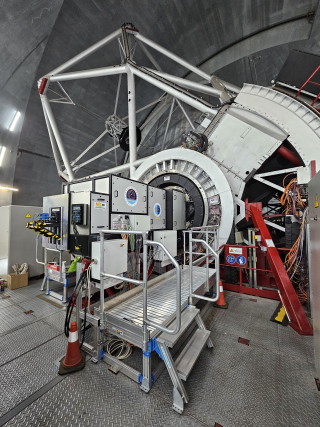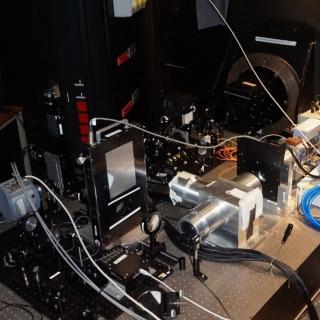General
Since 1996 the IAC has been contributing to the concept and design of the useful scientific load for the European Space Agency's Herschel Space Observatory and Planck Surveyor space missions. The two missions are part of the Horizon 2000 programme and are being developed as a single project. The observations will be carried out in the infrared, submillimetric and millimeter ranges by two different satellites in similar orbits around the L2 Lagrangian point. It is currently planned to launch both satellites using an Ariane type launcher in August 2007. Herschel is a multi-user observatory type mission which will explore the electromagnetic spectrum in the range of 60-670 microns (480 GHz – 5 THz). In November 1993 it was chosen as the fourth "cornerstone" mission of the Horizon 2000 programme. In 1996, the Planck project was chosen as the third medium-size mission of the Horizon 2000 programme. It is a PI (Principal Investigator) type mission for exploration of the sky. Its aim is to obtain nine maps of the whole of the sky in the frequency ranges 30-900 GHz with unprecedented resolution and sensibility. Using these maps it will be possible to map fluctuations in the Cosmic Microwave Background (CMB), radiation which is believed to be the remains of the initial phase of the universe known as the Big Bang. The IAC is a member of the international consortia developing the PACS (Photoconductor Array Camera & Spectrograph) and SPIRE (Spectral and Photometric Imaging Receiver) instruments for the Herschel satellite and the LFI (Low Frequency Instrument) for Planck. Specifically, the IAC is supplying the Planck LFI instrument consortium with the REBA (Radiometer Electronics Box Assembly) electronic device and associated low-level and scientific application software. The IAC is also producing the phase switch design as well as designing, producing and testing the 33 and 44 GHz radiometer hybrids. It is also contributing to the development of the DPC (Data Processing Centre) for the LFI. The IAC is also collaborating with the consortia developing the PACS and SPIRE instruments for Herschel on the concept and design of the ICC (Instrument Control Centres). For PACS, the IAC will supply the SPU (Signal Processing Unit) and associated onboard low-level software. The avionic and qualification models for the SPU and PACS and for the LFI REBA were delivered in 2005. In 2006 the flight models were delivered and the maintenance phase began. The European Space Agency's Planck satellite was launched on 14 May 2009, and has been surveying the sky stably and continuously since 13 August 2009. Its performance is well in line with expectations, and it will continue to gather scientific data until the end of its cryogenic lifetime.
Members
Scientific activity
Related conferences



